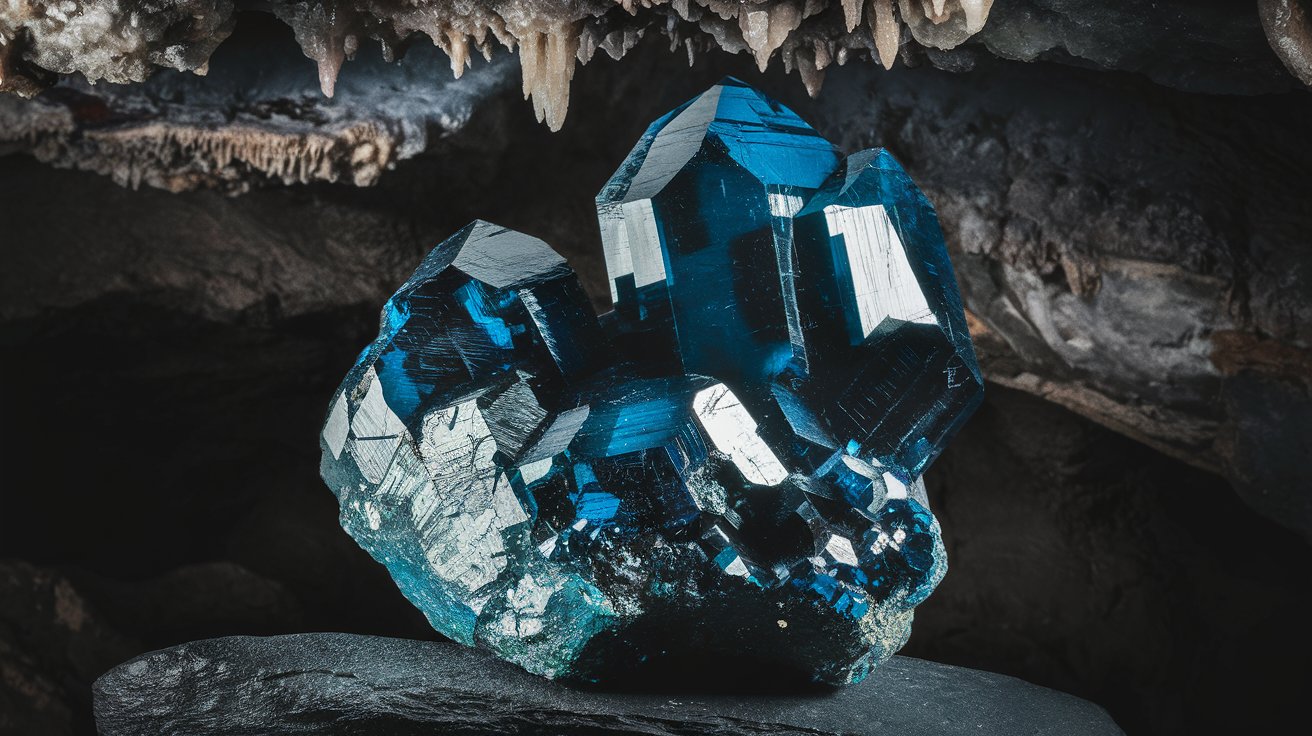
What is arseniosiderite? Arseniosiderite is a rare mineral composed of iron, arsenic, and oxygen. It typically forms in the oxidized zones of arsenic-rich hydrothermal deposits. This mineral often appears as yellow to brownish-yellow crystals, sometimes with a greenish tint. Why is it important? Arseniosiderite holds significance for geologists and mineralogists due to its unique composition and formation process. It can provide valuable insights into the geochemical conditions of its environment. Where can it be found? Notable locations include Germany, France, and the United States. How is it used? While not commonly used in commercial applications, arseniosiderite is prized by collectors and researchers. Is it safe? Handling arseniosiderite requires caution due to its arsenic content. Proper safety measures should be taken to avoid exposure.
Key Takeaways:
- Arseniosiderite is a rare mineral with fascinating properties, often found in association with other minerals. It's prized by collectors and studied in geological and environmental research for its unique composition and formation.
- Handling arseniosiderite requires caution due to its toxic arsenic content. It's primarily used in collector's circles and geological research, and its formation is influenced by oxidation processes, making it a subject of interest in crystallography studies.
What is Arseniosiderite?
Arseniosiderite is a fascinating mineral with unique properties and characteristics. It belongs to the arsenate minerals group and is known for its distinctive appearance and composition. Let's dive into some intriguing facts about this mineral.
-
Arseniosiderite is a hydrated iron arsenate mineral, meaning it contains water molecules within its crystal structure.
-
The mineral's chemical formula is Ca2Fe3(AsO4)3O2·3H2O, which indicates the presence of calcium, iron, arsenic, oxygen, and water.
-
Arseniosiderite typically forms in oxidized zones of arsenic-rich hydrothermal deposits, often found in association with other arsenate minerals.
-
The mineral was first described in 1851 by the German mineralogist Wilhelm Karl von Haidinger.
Physical Properties of Arseniosiderite
Understanding the physical properties of arseniosiderite can help identify and differentiate it from other minerals.
-
Arseniosiderite crystals are usually tabular or prismatic in shape, often forming in radiating clusters.
-
The mineral's color ranges from yellow to brown, sometimes exhibiting a greenish tint due to impurities.
-
It has a vitreous to dull luster, giving it a glassy or slightly matte appearance.
-
Arseniosiderite has a Mohs hardness of 3.5 to 4, making it relatively soft compared to other minerals.
-
The mineral's specific gravity is approximately 3.4, indicating it is denser than many common minerals.
Occurrence and Locations
Arseniosiderite is not a common mineral, but it can be found in specific locations around the world.
-
Significant deposits of arseniosiderite have been found in Germany, particularly in the Saxony region.
-
The mineral is also present in France, especially in the Languedoc-Roussillon area.
-
In the United States, arseniosiderite can be found in Arizona, particularly in the Bisbee mining district.
-
Other notable locations include Spain, Italy, and Greece, where arseniosiderite occurs in smaller quantities.
Uses and Applications
While arseniosiderite is not widely used in industrial applications, it has some interesting uses.
-
Arseniosiderite is primarily a collector's mineral, prized by mineral enthusiasts for its unique appearance and rarity.
-
The mineral is sometimes studied in geological research to understand the formation and alteration of arsenate minerals.
-
Due to its arsenic content, arseniosiderite can be used in environmental studies to investigate arsenic contamination and mobility in soils and water.
Health and Safety Considerations
Handling arseniosiderite requires caution due to its arsenic content.
-
Arseniosiderite is considered toxic if ingested or inhaled, so it should be handled with care.
-
When working with arseniosiderite, it is essential to use protective equipment, such as gloves and masks, to avoid direct contact and inhalation of dust.
-
The mineral should be stored in a well-ventilated area away from food and drink to prevent accidental contamination.
Interesting Facts about Arseniosiderite
Let's explore some additional fascinating facts about arseniosiderite.
-
Arseniosiderite is often found in association with other minerals such as scorodite, pharmacosiderite, and beudantite.
-
The mineral's name is derived from the Greek words "arsenikos" (arsenic) and "sideros" (iron), reflecting its composition.
-
Arseniosiderite can form pseudomorphs, where it replaces other minerals while retaining their original shape.
-
The mineral's formation is influenced by oxidation processes, which convert primary arsenic minerals into secondary arsenates like arseniosiderite.
-
Arseniosiderite is sometimes used in educational settings to teach students about mineralogy and geochemistry.
-
The mineral's unique properties make it a subject of interest in crystallography studies, where scientists examine its crystal structure and formation.
-
Arseniosiderite can exhibit pleochroism, meaning it appears to change color when viewed from different angles under polarized light.
-
The mineral's hydration state can vary, with some specimens containing more or less water depending on environmental conditions.
-
Arseniosiderite is often found in oxidized ore deposits, where it forms as a secondary mineral through the alteration of primary arsenic-bearing minerals.
-
The mineral's rarity and distinctive appearance make it a sought-after specimen for mineral collectors and museums.
-
Arseniosiderite's unique combination of iron and arsenic gives it interesting chemical and physical properties that continue to intrigue scientists and collectors alike.
The Fascinating World of Arseniosiderite
Arseniosiderite, a mineral with a unique blend of iron and arsenic, offers a peek into the Earth's geological wonders. Found in hydrothermal veins and oxidized zones, this mineral showcases a striking yellow-brown hue. Its formation involves complex chemical processes, making it a subject of interest for geologists and mineral enthusiasts alike.
Beyond its scientific allure, arseniosiderite's rarity adds to its charm. Collectors treasure specimens for their beauty and the stories they tell about Earth's history. While handling it requires caution due to its arsenic content, the mineral remains a captivating piece of nature's puzzle.
Whether you're a seasoned geologist or a curious learner, arseniosiderite invites you to explore the intricate dance of elements beneath our feet. Keep an eye out for this gem on your next geological adventure; it might just spark a newfound appreciation for the hidden treasures of our planet.
Frequently Asked Questions
Was this page helpful?
Our commitment to delivering trustworthy and engaging content is at the heart of what we do. Each fact on our site is contributed by real users like you, bringing a wealth of diverse insights and information. To ensure the highest standards of accuracy and reliability, our dedicated editors meticulously review each submission. This process guarantees that the facts we share are not only fascinating but also credible. Trust in our commitment to quality and authenticity as you explore and learn with us.


